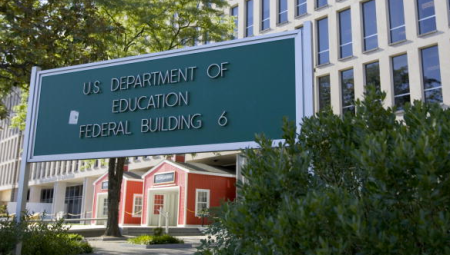There is a lot of discussion lately about abolishing the Department of Education, with the argument that there is no need for the DOE anymore, and the money should be reallocated to the states to decide how to spend it (within reason). To understand this a bit more here is a brief lesson on the history of the federal government’s involvement in public education.
In 1965, as part of his War on Poverty agenda, President Lyndon B. Johnson passed the Elementary and Secondary Education Act (ESEA). This law was controversial as it was the first time the federal government had gotten involved in funding for public education, which up until this time had been controlled by the states. Though the law passed, the country was understandably concerned.
Included in the legislation was Title 1 that provides financial assistance to agencies and schools with high percentages of children from low-income families to ensure equal access to education. According to the United States Department of Education, students from low-income households are “three times as likely to be low achievers if they attend high-poverty schools as compared to low-poverty schools” (USDOE, 1992).
Title I was Johnson’s way of addressing the educational gaps which come with child poverty (click here to read more on the ESEA).
So what happened next? Every five years, the sitting president has the opportunity to add his iteration of the ESEA. George W. Bush had No Child Left Behind (NCLB), Barack Obama had the Every Student Succeeds Act (ESSA). **Race to the Top was not part of the ESEA, rather it was a voluntary competitive grant for states started under the American Recovery and Reinvestment Act in 2009.
Without getting into the complexities of each iteration of the legislation, the most important thing to remember is the original legislation offered financial assistance to students growing up in poverty. While there is still a shadow of this, the testing and choice mandates have been set in place as a way to hold schools accountable for student success on test scores.
Does the current ESSA hold any promise of going back to addressing the academic needs of children growing up in poverty? For the most part, yes (click here to read more on the ESSA). I would say it’s less worse. There are many provisions which give power back to the states. So why do we still need the DOE?
Good question.
I don’t think we do. But what’s much more concerning to me is allowing public schools to be watered down with privatized charters or weakening public schools by allowing vouchers, and all of this without accountability.
What does ESSA say about charters? “The Every Student Succeeds Act makes several updates to the federal public charter school program to modernize the program and ensure public charter schools are held to the same standards as other public schools. The charter school program provides federal grants to support the creation of new charter schools, and the new law is updated to also allow such grants to support the replication and expansion of high-quality charter schools. The bill also includes important changes to eliminate barriers to enrollment for some students, increase charter school financial transparency, and include charter schools in the state accountability system in the same way that traditional schools are included” (Ravitch, 2016) (read her full article here).
Education is not a business, and cannot be run as a business. Hopefully readers will begin to see the connection between Betsy DeVos, charters, and federal law. That was my point, at least.
These are my reflections for today.
11/30/16


2 thoughts on “Federal law and public education”